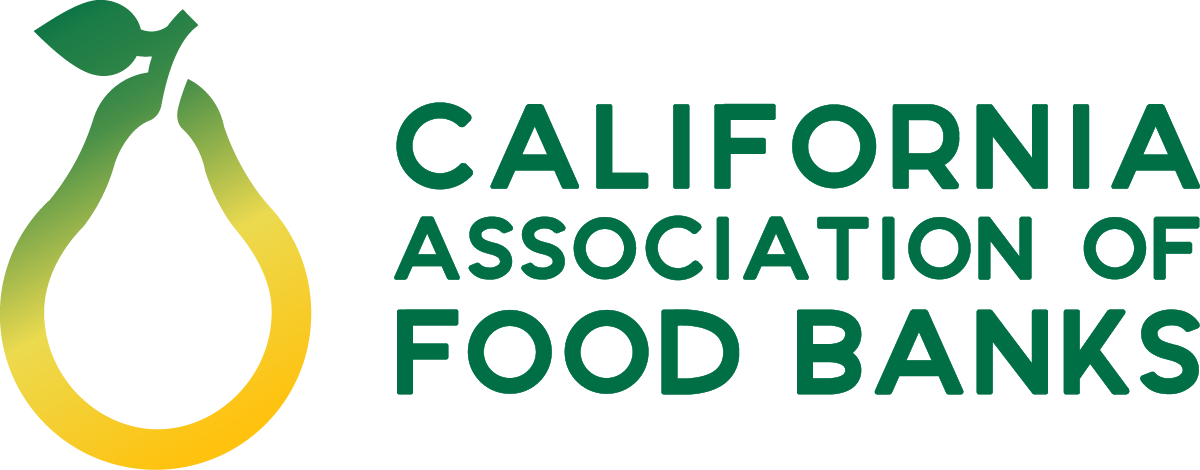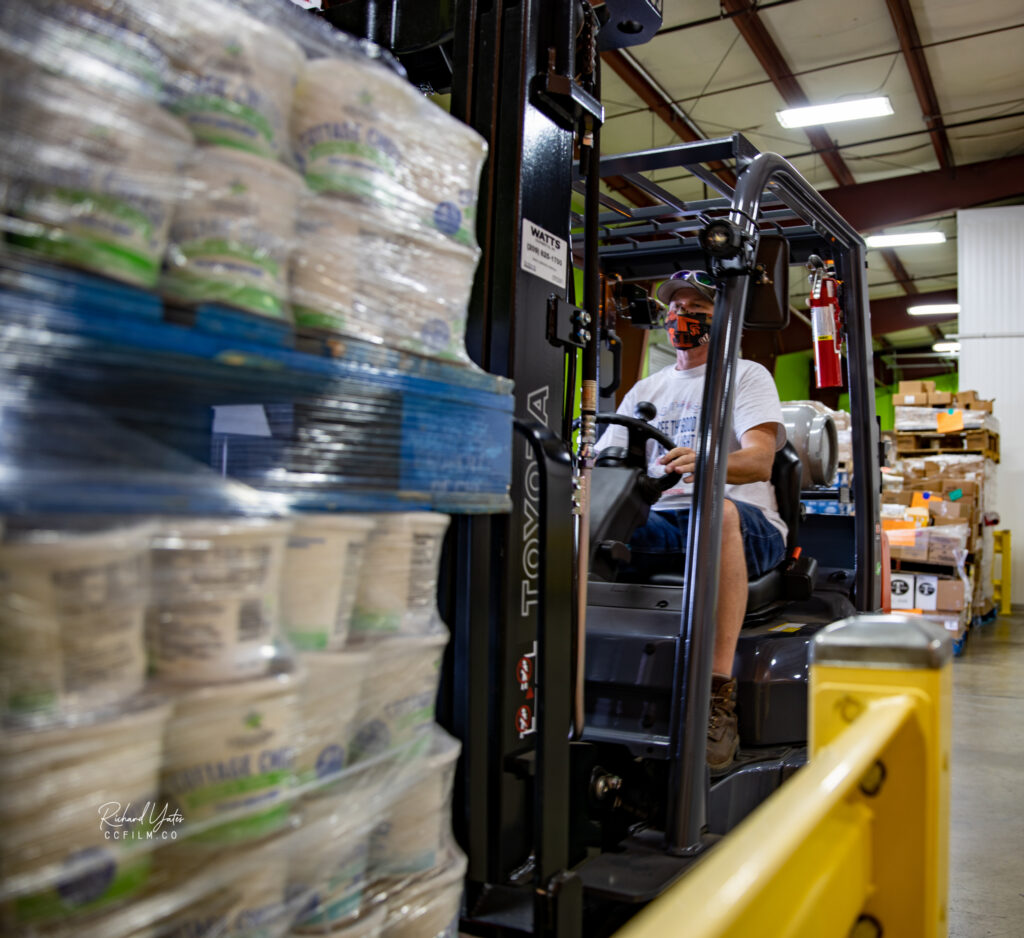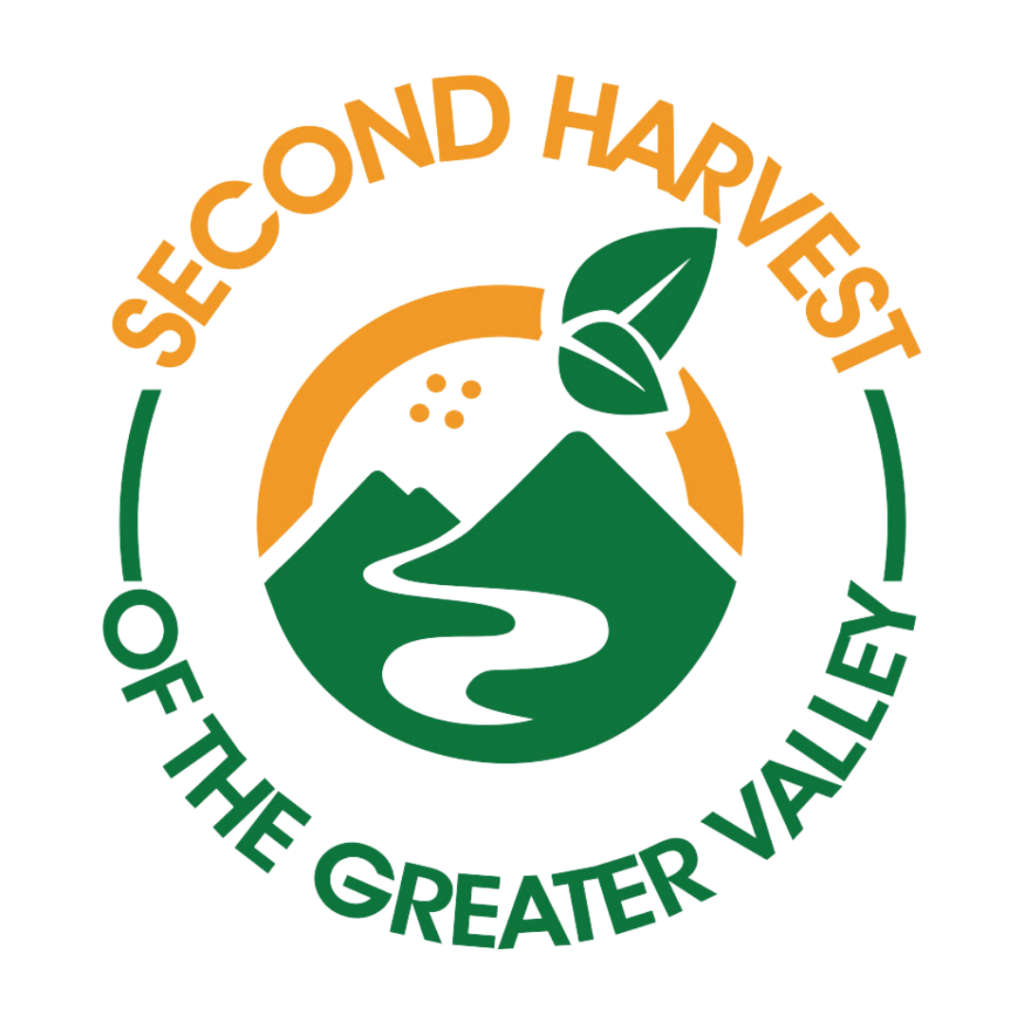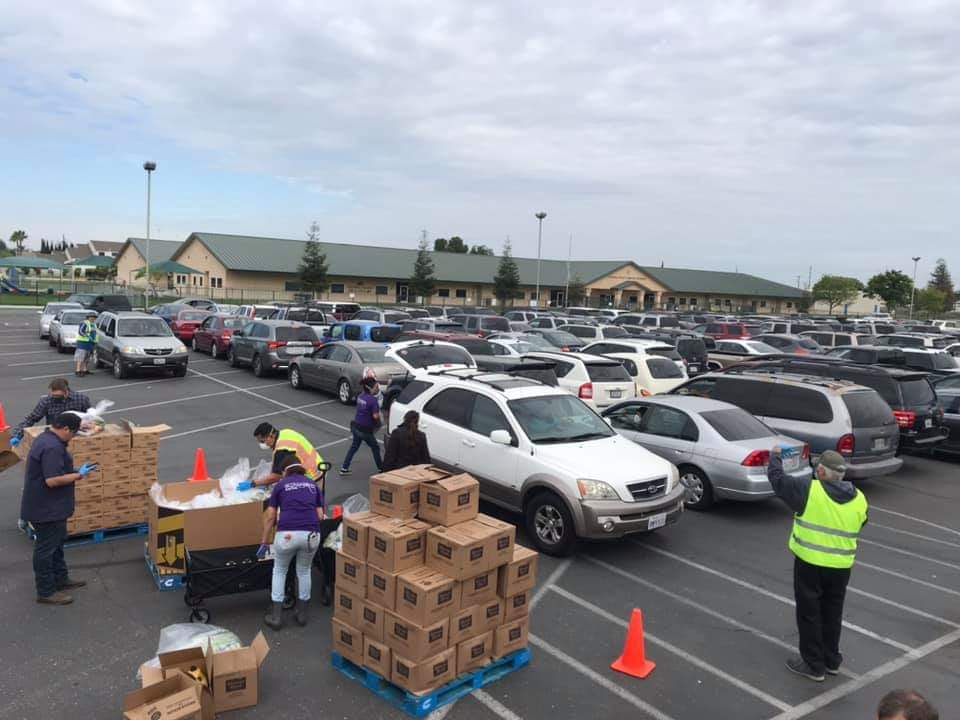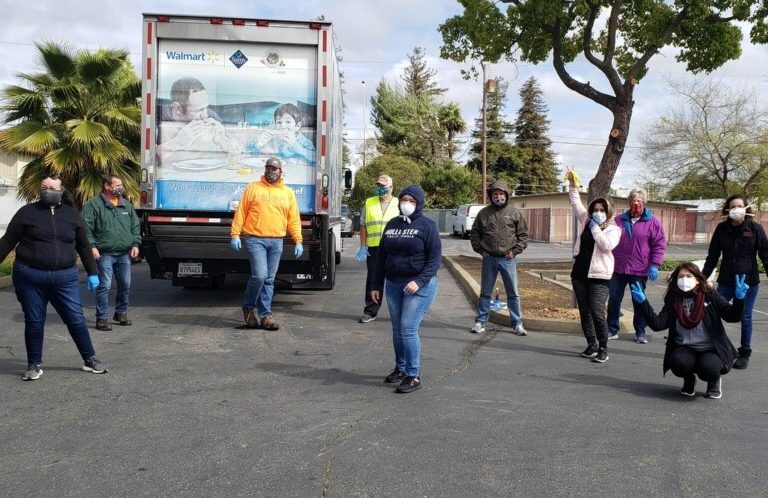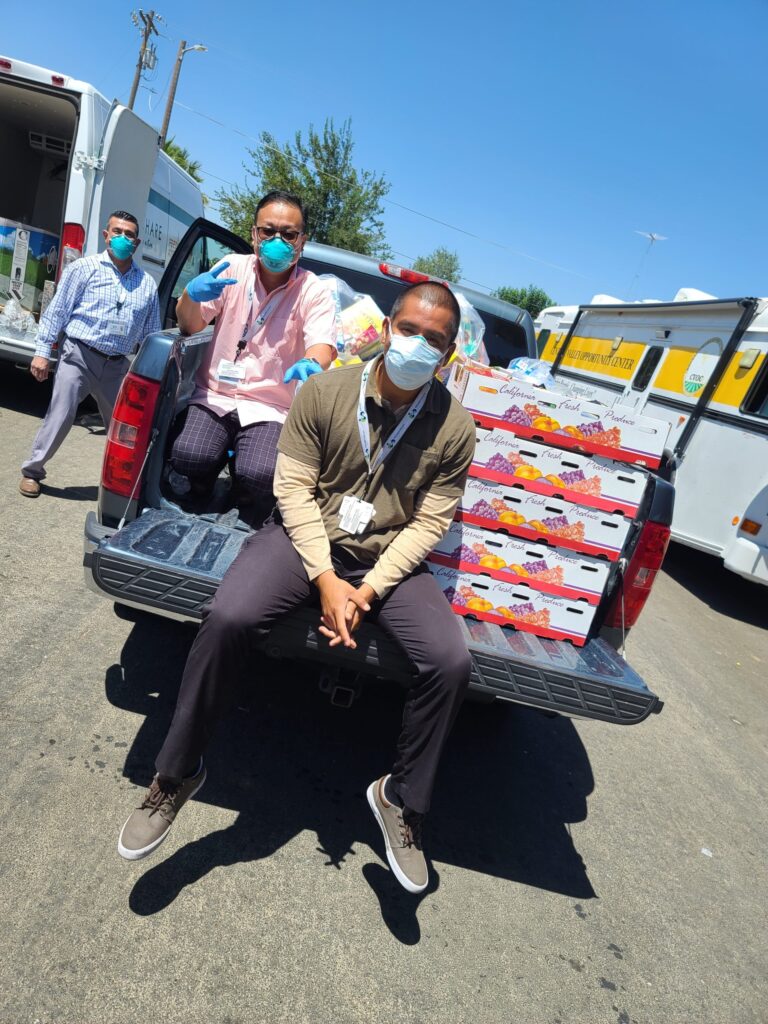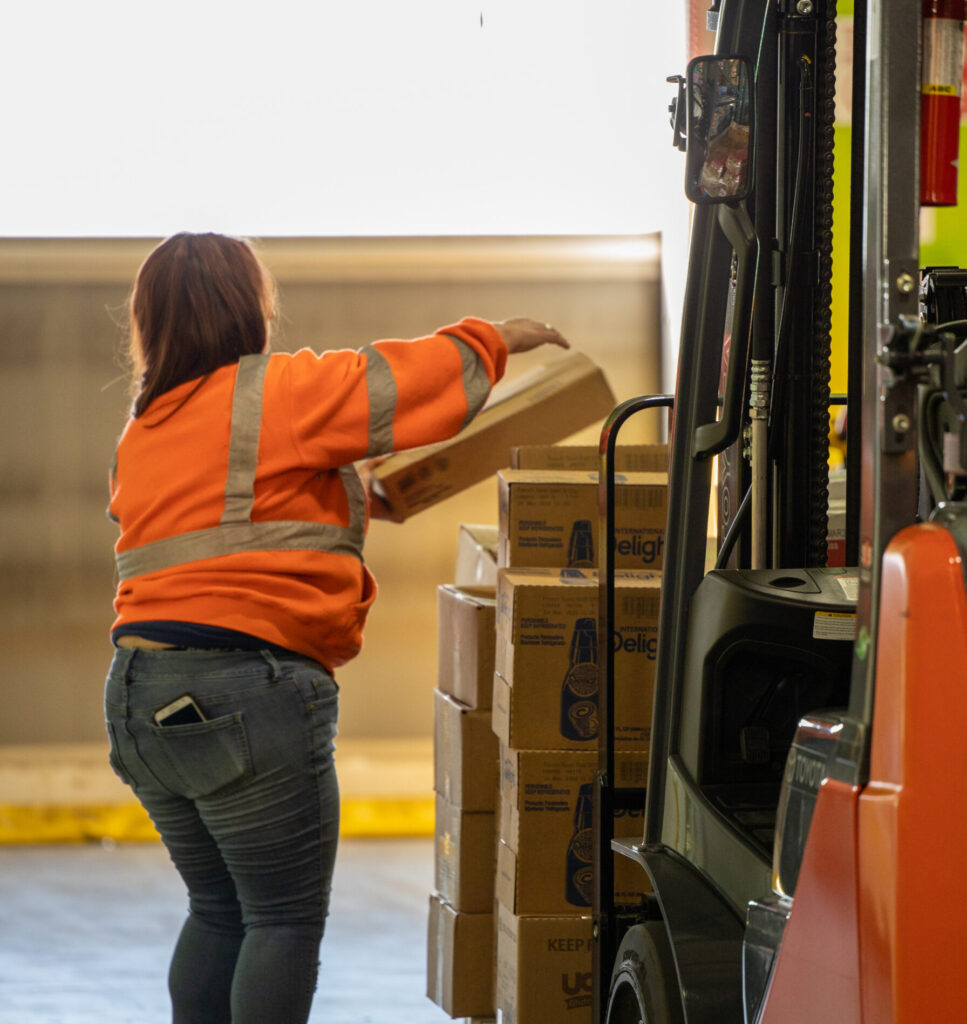The past year has changed life as we know it in California and around the world. We’ve had to adapt, rethink, and recover in so many ways. Second Harvest of the Greater Valley — until recently, Second Harvest Food Bank of San Joaquin and Stanislaus Counties — has a new name, new logo, and new ways of reaching the vast community they serve.
The change in logo is anything but aesthetic: “We have been second Harvest Food Bank of San Joaquin
and Stanislaus Counties for a very long time,” states Jessica Vaughan, Executive Assistant/Director of Development at SHGV.
“It did not really convey who we actually cover— it was leaving out some very important partners. When [CEO] Keenan came in, he made a very firm stance that our partner distribution organizations [PDOs] are just as important as we are and they deserve to have an equal say in who and what we are. So we started to think collectively — if we could change our name, what would that look like and how would it be more inclusive?
“We came up with Second Harvest of the Greater Valley. If you look at our logo, it was designed by members of our board, our staff had some input into it, we had some input into it…My favorite part is that the four dots are actually the four partner distribution organizations that help make up the whole package of who we are.”
It’s in the shape of an orange, and then the two leaves represent the two counties we directly serve as a food bank, and the four dots in the orange represent the PDOs.
Keenon Krick, CEO of SHGV
San Joaquin and Stanislaus Counties are the two counties directly covered by SHGV, but there are another six that also rely on their services. The four partner distribution organizations doing the boots on the ground work are other CAFB member food banks: Interfaith Council of Amador (Amador County), The Resource Connection Food Bank (Calaveras County), ATCAA Food Bank (Tuolumne County), and Merced County Food Bank.
The transition to COVID-19 safe operations was no easy task, yet SHGV staff and volunteers were determined to meet the needs of their community as quickly as possible.
“We swapped [to drive-through food distribution] within about four days,” says Vaughan, “So it was a really quick, like ‘OK team, what are we gonna do?’ It was really driven by the volunteers out there—they were like ‘We don’t want to stop providing this service, we know it’s necessary. So what can we do to continue to make this happen?’”
The answer to that question was manifold: existing programs were made pandemic safe, and new programs were put in place to fill the gaps.
SHGV started a program about seven years ago called Mobile Fresh, where they go out into the community between three and five times per week and provide fresh food and other staple items to neighborhoods in need. Pre-pandemic, this entailed participants walking up to the mobile food distribution, but it has since switched to a drive-through.
“And because of that,” states Vaughan, “we’re actually able to serve more people in less time, because nobody is having to get out of their cars, volunteers are in their own safe stations safely masked and gloved, and they just load the food directly into the cars.”
SHGV also runs a Senior Brown Bag program that provides 20 pounds of mixed groceries to seniors twice per month at 24 sites in San Joaquin County. Sites have converted to drive-through or home delivery based on volunteer availability. While Senior Brown Bag meets the immediate food needs of older adults, it also helps fulfill emotional needs. Many look forward to seeing smiling faces and people that truly care about their wellbeing.
“These distributions are not only a necessity to our seniors for food, but for their mental health and ensuring they have someone checking in on them. We couldn’t be more proud of how quickly and how efficiently it’s been operating.”
Jessica Vaughan, Executive Assistant/Director of Development
Another COVID-19-necessitated program SHGV has implemented is their Emergency Food Box program. “We began our emergency food box program within two weeks of the initial shutdown, with boxes built by hand from our volunteers,” explains Vaughan. “The program allows participants to sign up through our website or by calling our office. They can receive a box of emergency food and a list of other resources twice a month.”
COVID-19 has affected people from all backgrounds, and SHGV has seen the impact firsthand: “Before, we were mostly serving children and seniors, but now we’re serving more working class people that may have lost their jobs, or their hours have been cut, the circumstances change for whatever reason,” reports Krick.
Maybe they can’t work because there is a childcare issue or they’re off their job for however long they have to be. Now we get phone calls and hear people that didn’t know if they could actually access a food bank for help. Who we’re serving has changed tenfold; the face of who we’re serving has completely changed.
Keenon Krick, CEO
Lastly, SHGV has partnered with CAFB and medical partners to implement a program specifically for farmworkers in their communities.
“When CAFB offered the grant opportunity, it was a perfect time for us to partner up with both CAFB and partners in the medical industry who wanted to get some important information out,” says Vaughan.
“There are 4 to 5 locations where we’re taking food directly to the sites where [farm workers] work and live and they’re able to benefit from the services that we offer—whereas before, they wouldn’t have been able to do that without taking some time off of work. We’re taking a little bit of that stress off by meeting them where they are.”
“We’re really trying to target populations that we haven’t been directly serving in the past, so we’re serving the community as a whole and meeting the diverse population that we do have,” says Krick. “Because we have a great partnership with CAFB, we are able to get produce and other things that we give out at a very fair price.”
“Even for our staff—” adds Vaughan, “Once [PPE] started flying off the shelves it was difficult, so we were very thankful when CAFB reached
out and said, ‘Hey, we’ve got supplies to keep your staff and your volunteers safe,’ that was huge for us—especially early on in the pandemic when we were scrambling to figure out how to keep everybody safe.”
We at CAFB feel lucky to be able to partner with a food bank that is as dedicated to its community’s well-being as Second Harvest of the Greater Valley. We think their new name is a perfect reflection of their impact: working to create a greater life in the greater valley every day.
SHGV is hosting a St. Patricks Day Drive-Thru Dinner fundraiser. Even if you are unable to attend the dinner you can still purchase a meal for a senior in need!
All photos and stories courtesy Second Harvest of the Greater Valley. You can follow them on Facebook, Instagram, Twitter, and LinkedIn.
Joint Statement: California Stakeholders Condemn Senate Budget Bill’s Historic Threat to SNAP and California Families and Workers
Governor Newsom Signs 2025-26 Budget
#MemberMonday: Community Action of Napa Valley
Hunger is a Policy Choice: Proposed Cuts to Social Programs Fuel California’s Food Insecurity Crisis
All Are Welcome at the Table: Celebrating Pride with Purpose
California SNAP Stakeholders Denounce House H.R. 1 Vote that Makes Historic Cuts to Federal Food Assistance
Final Call for CalFood: Essential Funding Fuels Student Success in Higher Education
United for a Hunger-Free California: Highlights from Capitol Action Day 2025
State Senator John Laird and State Assemblymember Stephanie Nguyen Recognized for Advocacy Efforts as CalFood Champions
#MemberMonday: Los Angeles Regional Food Bank
